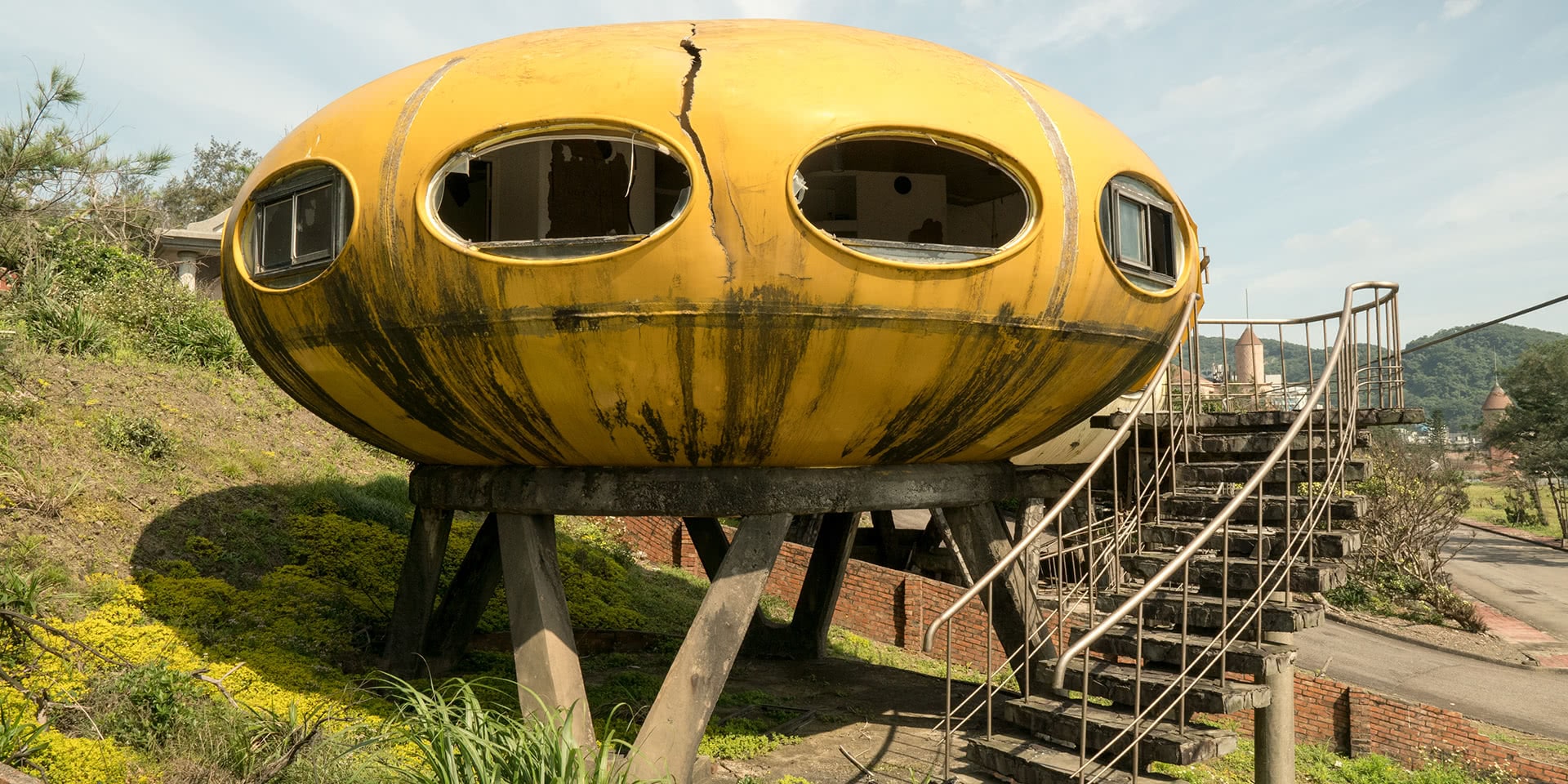
WE WANT PEACE” the graffiti declares beside the crumbling UFO-like buildings of Wanli district; judging from the decaying buildings, broken brick walls, and deserted streets, it doesn’t look like they got it.
There are a lot of good reasons to go to Taiwan – the hiking, the diving, the cycling – but this decrepit enclave overlooking the East China Sea is well worth the journey just north of Taipei.
What I saw was what remained of high-end vacation homes and the architecture ambitions of Finish architect Matti Suuronen: Futuro and Venturo houses. The Futuro dwellings do indeed look like flying saucers, and the Venturo buildings are more angular but wouldn’t look out of place in the Jetsons. The future was very much part of the inspiration – at least what people thought the future would look like in the 1970s and 1980s. It didn’t take long for the future to get post-apocalyptic.
In the 1980s, the project was abandoned, leaving these strange UFO-like buildings standing on prime – though harsh – seaside real estate. Rumors of suicides, curses, and hauntings have been gleefully passed around as the village became ever more dystopian. Just a short while from the Yehliu Geological Park, the idea was to build a resort area of Futuro and Venturo houses – not to be confused with the nearby “Sanzhi Pod Houses” that were entirely demolished in 2010. Only about a dozen of the Futuro and Venturo houses remain standing.
In truth, however, not all of these buildings are abandoned as they first seem; some people actually live here. In fact, one of the occupied houses I saw on my journey had a Tesla parked out front, a little bit of what the new future looks like. What the site lost as a high-end area for prefabricated houses, it regained as a tourist attraction.
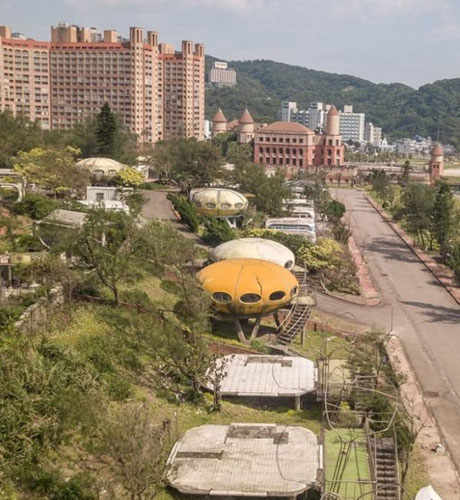
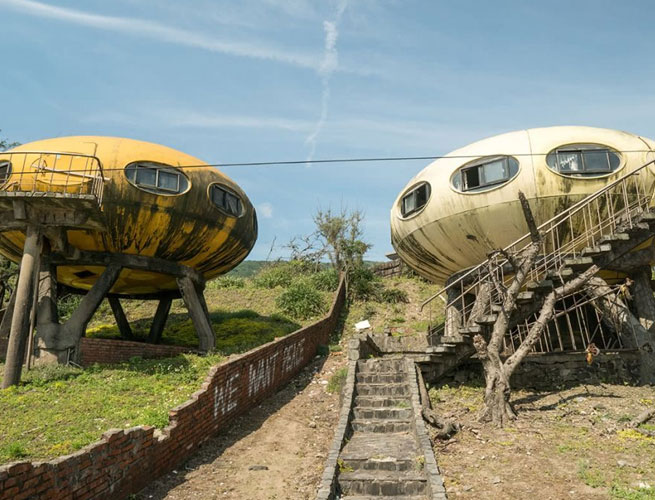
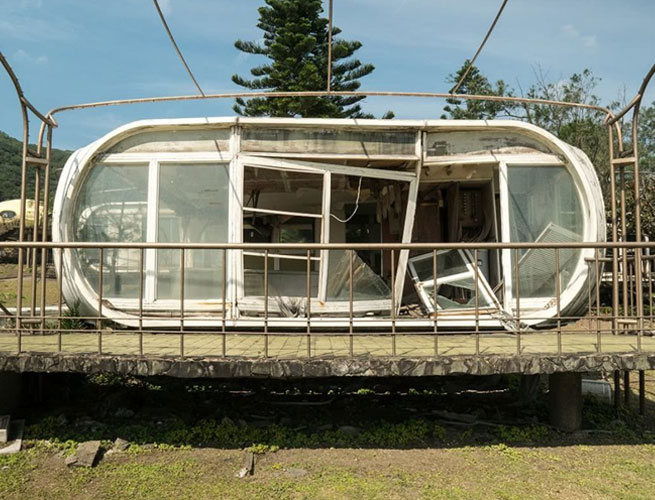
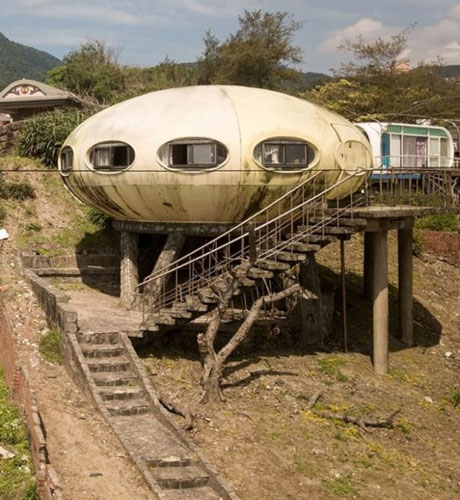
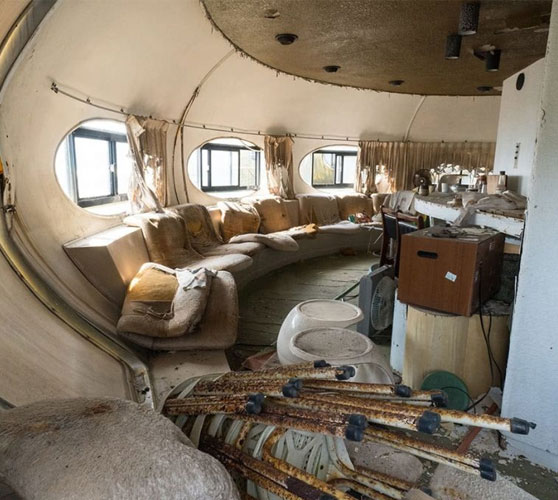
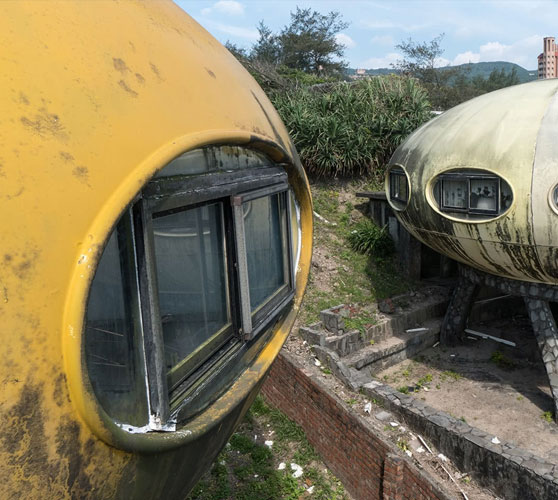
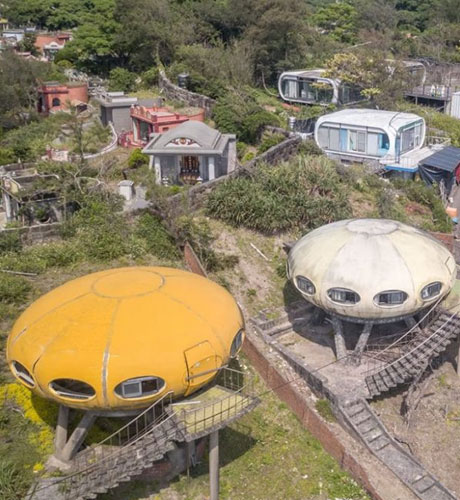
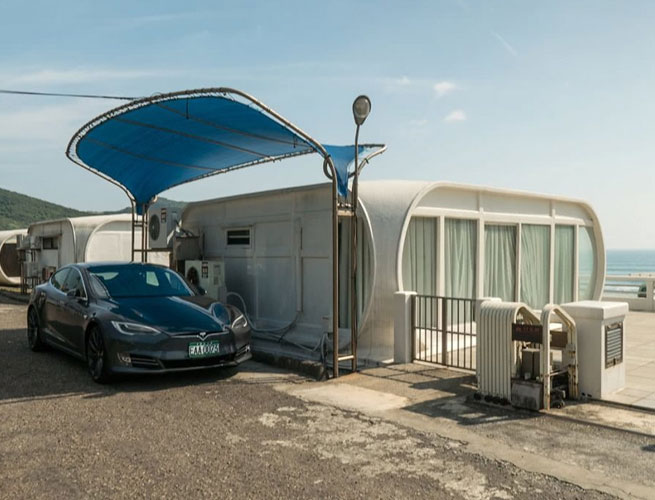
Today, the Futuro houses are a regular stop on the sightseeing routes of foreign and domestic travelers discovering the lands around Taiwan’s North Coast. The idea behind the village itself comes from government official Su Ming, who wanted to use the beachside area to attract American servicemen. From the vantage of a drone, viewers can see that just beyond the village sit the high-rises seaside travelers have come to expect from Taiwan.
Some of the village has been destroyed, but much still remains. Travelers unafraid of the rumors of cemeteries and skeletons can still take a quick journey inside the dwellings to see what four decades of abandoned UFO looks like.
The pods are made of concrete and covered in a fiber-reinforced plastic. This sort of “Futuro House” was the ambition of Matti Surronen, and indeed much of his inspired style survives around the world – from Australia to Florida. The Futuro houses of Wanli, however, were not likely Surronen’s design, as Surronen stopped construction in 1973, and there are some minor differences in the style.
The “futuristic” look comes from an attempt to make prefabricated houses that could be easily heated and built, but concerns about the early building materials meant that the Futuro would remain a niche architectural interest rather that the home of the future.
Still, today, these odd little homes are a confusing marvel. It sits, precariously as it always has: at Feicui Bay in Wanli – half surviving, half destroyed.



